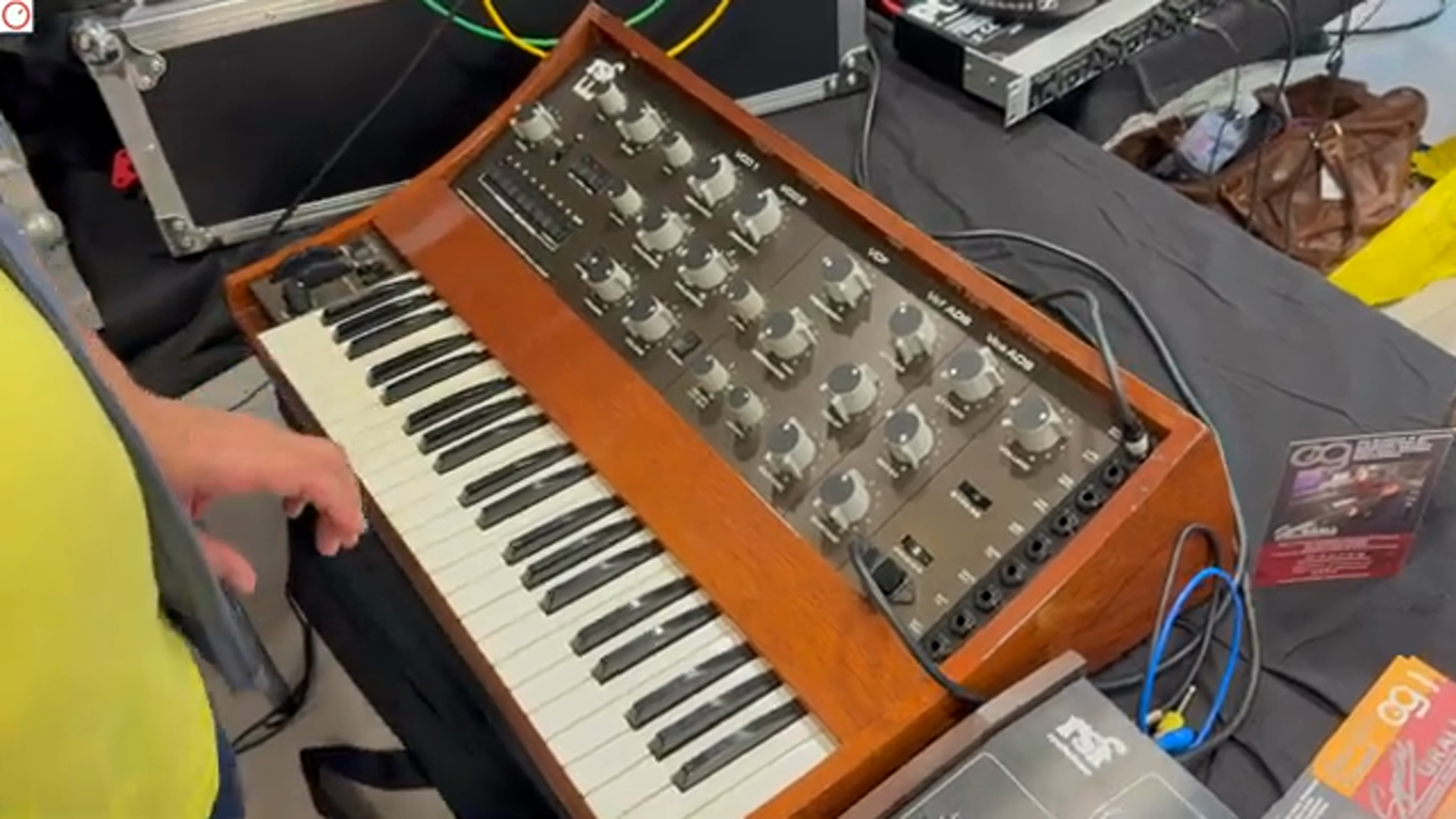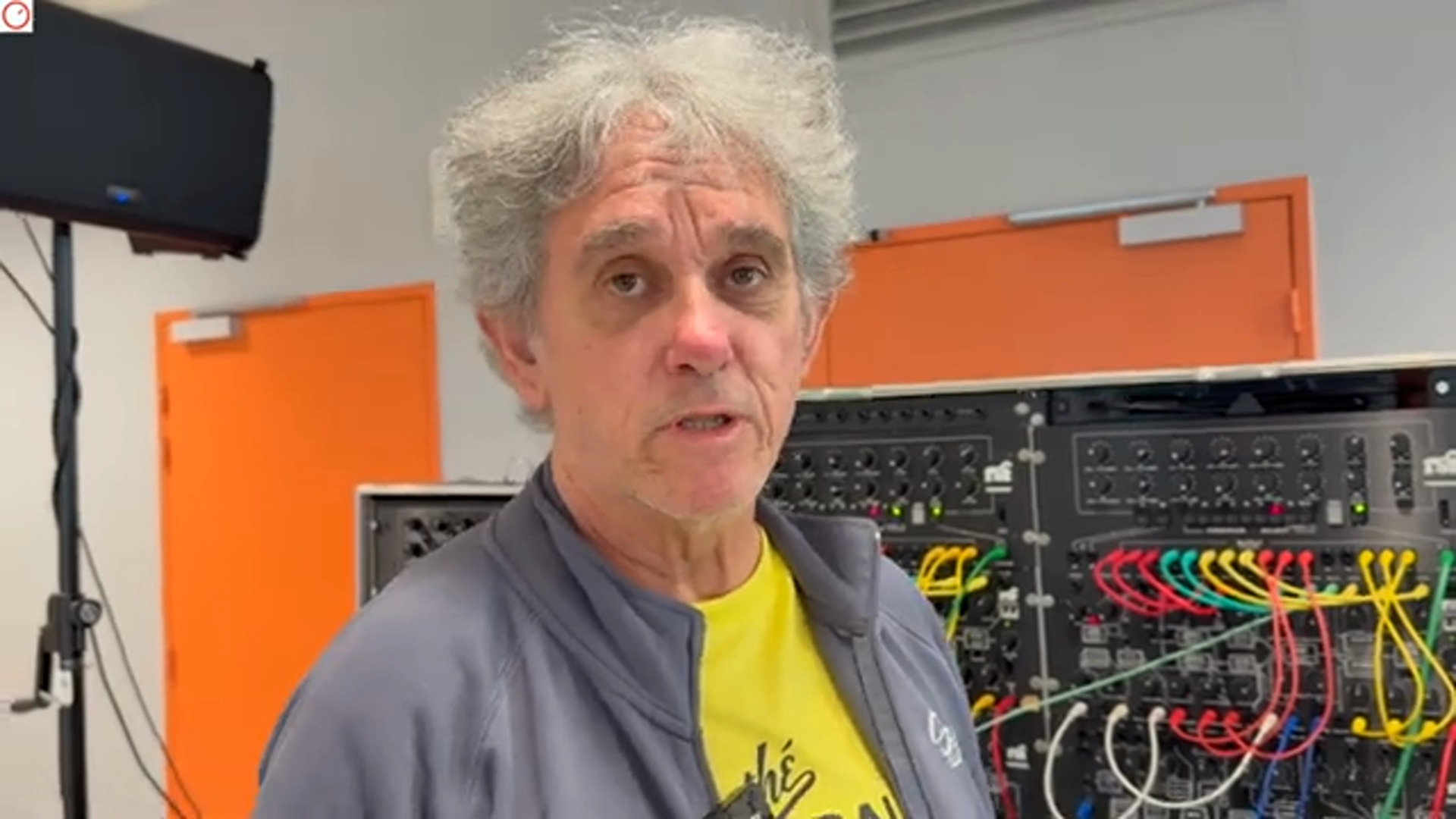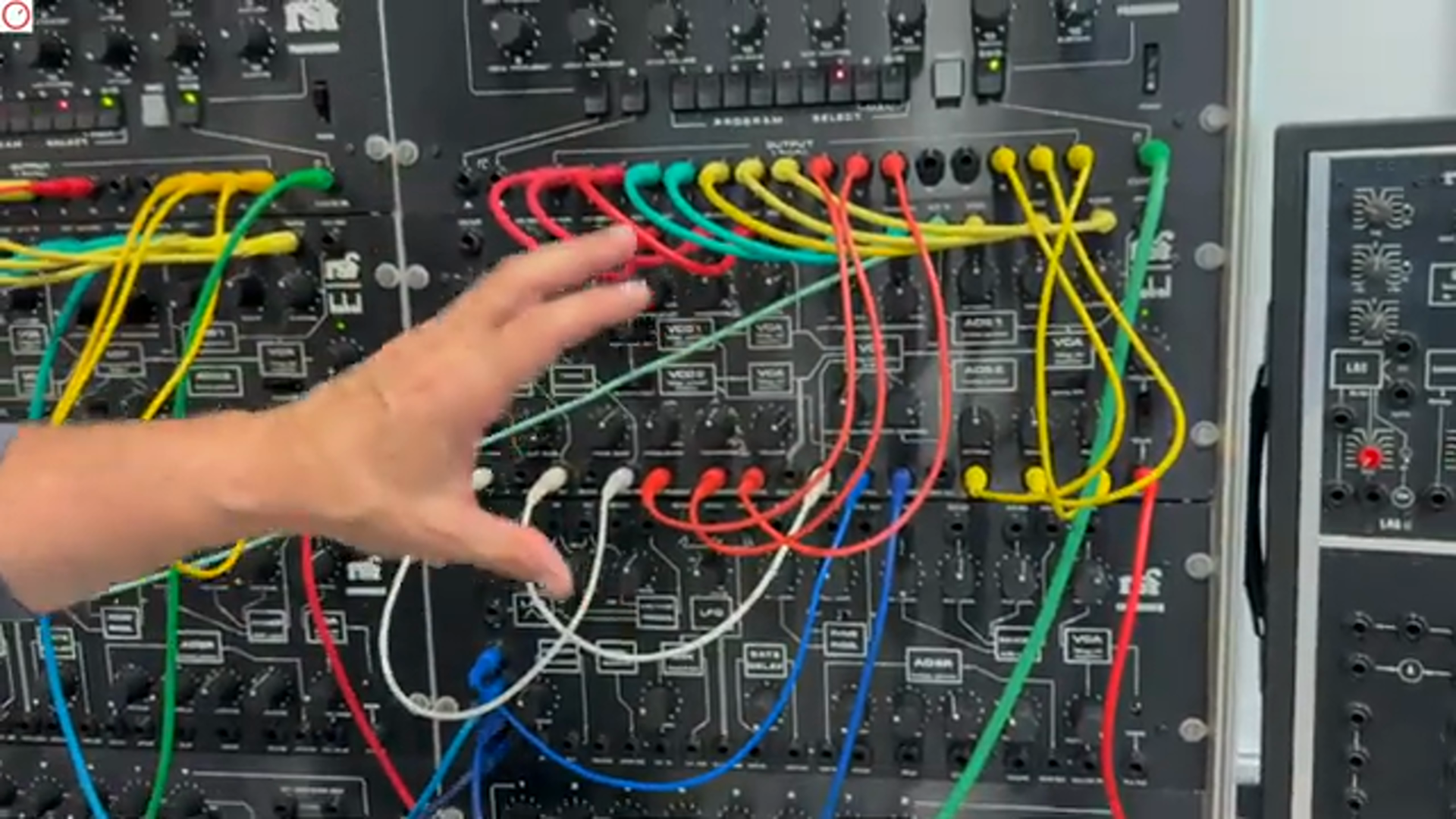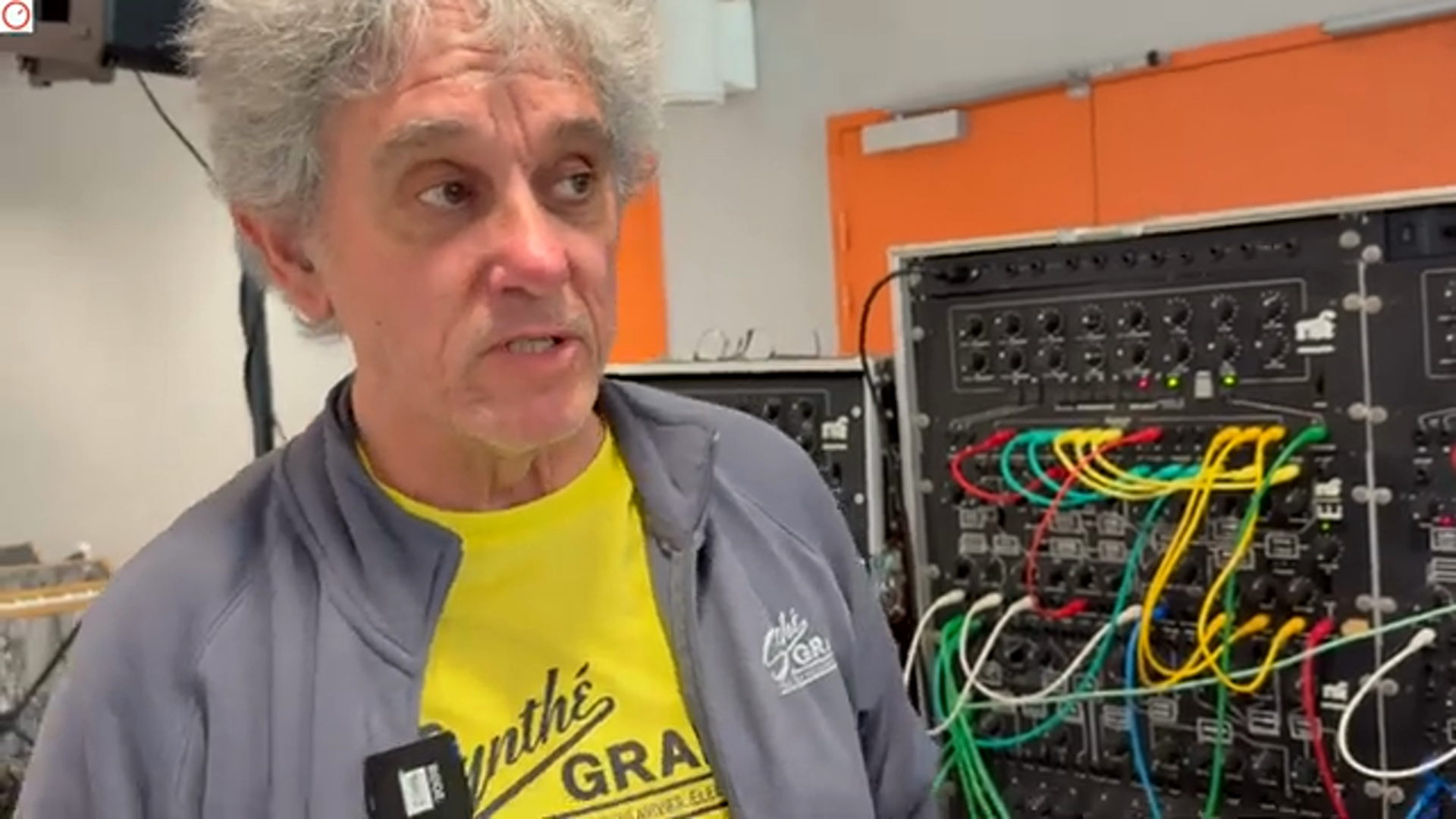Dive into the rarefied world of RSF synthesizers as synthanatomy guides us through a nebula of vintage gems. In an immersive journey at SynthFest France 2025, discover the intricate tapestry of RSF’s history, technological marvels, and sonic ghosts that linger in their circuits. Join Olivier Grall and synthanatomy as they explore these legendary instruments that once redefined the frontiers of sound.

23. June 2025
LUMINA
Unveiling RSF’s Mystique with synthanatomy
A World of Vintage Reverie
As the cameras roll at SynthFest France 2025, a space unfolds that is less a booth and more a sanctum of sound. We encounter Olivier Grall, a custodian of vintage analog dreams, weaving tales of RSF synthesizers – instruments that once whispered the future into the ambient air of the 1980s. Grall, a French musician and technician, envelops himself in the world of electric pianos, organs, and synthesizers, casting a net of nostalgia over attendees. His space, a museum of sonic history, is tucked away near Bordeaux, a repository for keyboards and rhythm machines that pulse with the echoes of MIDI messages past. Each RSF creation, forged in the twilight between industrial processes and artisanal craftsmanship, calls to those seeking the ghosts of music’s past.
The Enigma of RSF
RSF: a name that might evoke mystery more than familiarity among the uninitiated. These initials stand for Rubin, Serge, and Fernandez, two visionary brothers from the shadows of Toulouse. In the late 1970s, they embarked upon a clandestine journey, creating synths that were as much handcrafted secrets as they were technological pioneers. Grall narrates how RSF ventured beyond conventional sonic territories, captivating listeners with instruments that were both rare and profound in their aural architecture. Among them, the RSF Kobol emerged as a rare gemstone, with only 200 crafted keyboards that served as gateways to otherworldly soundscapes. The synergy of plastic memories and sequencers in these analog labyrinths became a symphony of the avant-garde, chronicling an era where memory patches were the undiscovered continent. Such machines were not mere tools but artists of resonance, leaving spectral imprints on the culture of sound.

"So RSF, there are very rare items generally because the production was quite low, but they are very, very good sounding instruments."
A Symphony in the Shadows

"There is no other synth on the earth for the moment able to do that."
In this dimly lit realm of sound folklore, where rarity is as much a currency as the melodies conjured, RSF synthesizers stand as sentinels of a bygone era. Their limited numbers only enhance their mythos, with each unit a storyteller in the language of oscillations. Olivier Grall shares insights into the uniqueness of the RSF Kobol’s design, explaining how its sound was a delicate dance between minimalism and magnetic flair. Features like drones, sequencers, and memorized gates whispered a narrative that was ahead of its time. In a landscape populated by the industrial and the handmade, the Kobol’s voice told a story of harmony between mechanized construction and human touch, creating ethereal tones that have yet to be replicated in the analog domain.
Synthesizers as Sonic Sculptures
The RSF series sits as monuments of innovation where sound is sculpted with a brush of voltage and a canvas of circuitry. Olivier Grall unveils the secrets of the SSM2040 chip, the heart of the RSF Kobol, which delivers a sonic tapestry both rich and expansive. This was not just about raw power, but the subtle interplay of snappy envelopes and lush filters that resonated with unparalleled fatness – a sonic blueprint drawing comparisons to the Minimoog yet carving its distinct space. RSF’s approach was one of inclusivity, where each synth could evolve with the hands that played it, allowing a modular symphony to unfold. In their quest to push boundaries, RSF did not just build instruments; they coaxed spectral sound stories from them, narratives that ripple across the canvas of time.

"Like on MS-20, it's the same. And if you patch, you add some feature, some function, and you can control like a modular system."
Vintage Echoes in Modern Clones

"It's the only solution to get the RSF sound."
The modern synth landscape often seeks to capture the elusive essence of its predecessors. Olivier Grall recounts the collaboration with Behringer, whose fidelity to the original RSF designs manifests in their COBOL reproduction. Through careful examination and replication of the RSF magic, the partnership has birthed a synth clone that straddles the divide between past grandeur and present accessibility. Behringer’s dedication to maintaining the purity of RSF’s tonal integrity is a testament to the enduring allure of these machines. Olivier, deeply satisfied with the outcome, acknowledges the meticulous challenge of mirroring the soundscapes laid down by the original RSF engineers, ensuring that the echoes of yesteryear can be replayed in today’s digital symphonies.
A Legacy of Innovation and Imagination
As the conversation unfolds at SynthFest, Olivier Grall stands amongst his trove of rare RSF treasures, each a key to sonic frontiers yet to be fully explored. The mystique of RSF products lies not only in their rarity but their innovative spirit – pioneering polyphonic controllers, and complex modulation pathways that were unheard of during their inception. Framed as the progenitors to modern-day MIDI controllers, the RSF lineup challenges current synth enthusiasts to embrace the legacy of exploration. Grall, surrounded by gleaming examples of RSF’s paradigm-shifting vision, encourages visitors to step inside this world where sound and innovation blurred to craft not just music but an enduring narrative of sonic discovery.
Latest articles
Watch on YouTube:
https://www.youtube.com/synthanatomy
Links from synthanatomy:
Sponsored links:
If you purchase via these links, we may earn a small commission – at no extra cost to you.
🔗 Check price on Amazon